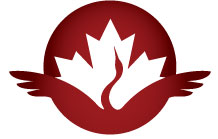[Marc Noland of Peterson IIE has done extensive work on the entire food assistance situation, including the facts on the ground, and the policy dilemma of whether food aid has the unfortunate byproduct of unintentionally helping to underwrite the DPRK’s nuclear program. He weighed in on the Food Aid Debate on 5 April 2011.]
The World Food Program, Food and Agricultural Organization and UNICEF have released their potentially fateful report on the North Korean food situation (formally, “WFP/FAO/UNICEF Rapid Food Security Assessment Mission to the DPRK, March 24 2011″). Although these assessments are a staple of public discussions on North Korean food security issues, for multiple reasons the balance sheet exercise that is reported is almost surely inaccurate, possibly by a large margin—if taken seriously, the past WFP/FAO reports would imply that North Korea was in almost continuous famine for the past decade, something no one asserts.
Nevertheless, these reports are so central to the public discussion that they are worth parsing.
[To read the details of this post, please click Parsing the WFP/FAO Report. At this point we would also suggest reading an earlier post entitled Does Food Aid Support the North Korean Nuclear Program? The conclusion of that post reads as follows. We have not reproduced the charts here, but these can be viewed in the PIIE Blog as linked above.]
There are two analytically distinct issues. The simplest is the issue of diversion-if aid is diverted to military consumption, the military can then devote money that would have otherwise gone to food on other items. The more subtle possibility is that aid relaxes the state’s budget constraint and frees up resources for a panoply of purposes, including the military, in effect acting as implicit balance of payments support.
So, is food aid fungible?
Of course it is.
The evidence is quite compelling, actually. As food aid ramped up during the 1990s, imports on commercial terms fell-and never came back. Some might object that the fall in commercial grain imports was a due to the poor state of the North Korean economy, but other imports began rising after 1998—just not food imports. Sherman Robinson, Tao Wang and I even constructed a computable general equilibrium model that would allow one to analyze how military expenditure increased as a result of this implicit balance of payments support. (It would be less than dollar-for-dollar since the government would presumably use the windfall on a range of goods and services purchased by the state, not just the military.) The anecdotal evidence suggests that such concerns are not misplaced: for example, in 1999, after the famine had ended, but aid from South Korea and the WFP continued to ramp up, the North Korean military went on a buying spree, purchasing among other things, the Kazakh air force.
As one who supports the provision of food aid to North Korea, I understand the temptation to deny this linkage. I have particular sympathy for sitting officials questioned about this issue in a public setting. But there is something to be said for being honest with ourselves. Providing food aid to the people of North Korea is the right thing to do—even if at the margin it advances the military ambitions of their government.



Leave a comment